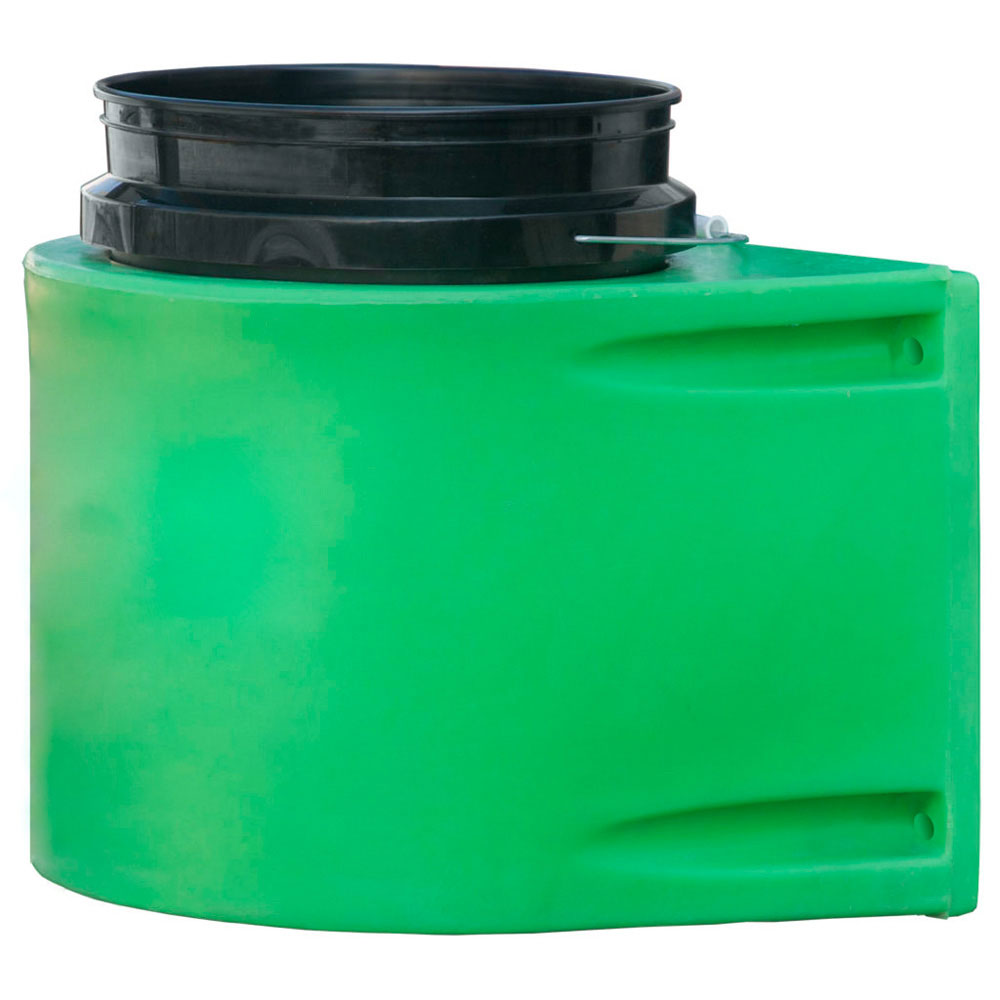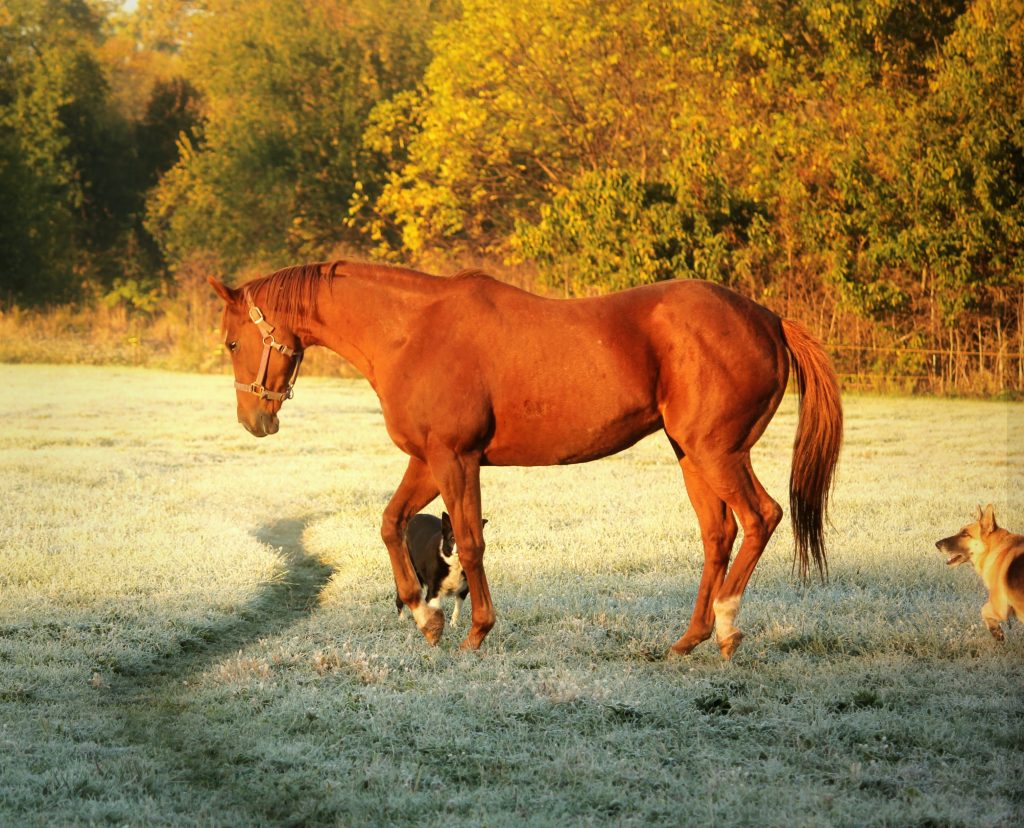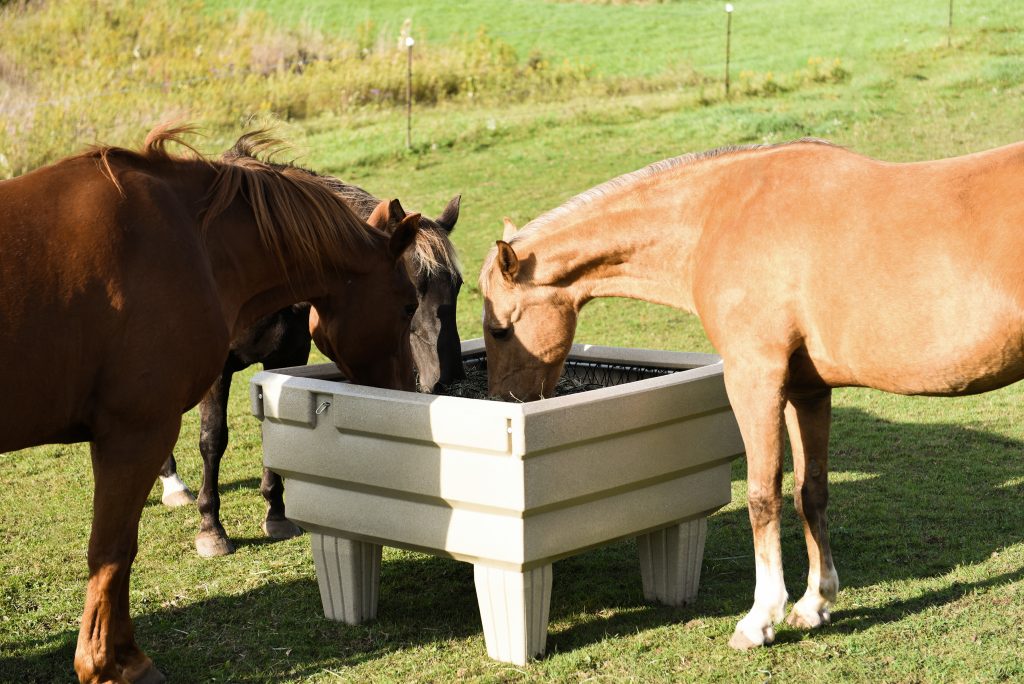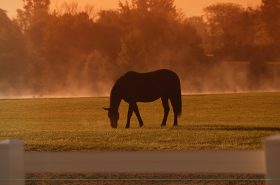The leaves are changing and fall is setting in, but as we move into the colder months of the year, I’ve learned there are some important things we can do to keep our horses healthy.
Though most horses are naturally well-equipped for cooler weather, they can all benefit from a little help on our part.
Here are six tips for keeping your horse happy and healthy this fall:
- Invest in insulated bucket holders or heated water buckets. Horses tend to drink less in colder weather, and this can lead to serious problems–aka, impaction colic. To encourage your horse to drink, provide a warmer water source. Water between 45 and 65 degrees Fahrenheit is best.

- Feed loose salt either free choice or in your horse’s feed ration to encourage drinking. This should actually be done all year long to meet sodium and chloride needs but it’s especially important in fall and winter to keep horses drinking.
- Feed a high-quality pre or probiotic as your horse transitions from grass to hay. Probiotics add beneficial bacteria in the gut to aid the digestive process while prebiotics act as food for those good bacteria. Either one can help with feed transitions such as going from grass to hay.

- Monitor grass intake for horses with metabolic challenges. Near or below freezing temperatures can stress grass and cause a rise in non-structural carbohydrates (NSC’s). Laminitis-prone horses may need to be muzzled or kept off pasture, even during colder weather.
- Pay extra attention to older horses who may have trouble maintaining weight in winter. Older horses might have trouble eating and digesting hay, so hay substitutes such as soaked hay cubes or beet pulpmay be needed. You can make your own “senior feed” by mixing 2 parts alfalfa pellets, 1 part steamed oats, 1 part beet pulp, and 1 part wheat bran. Feed 12 lbs of this mix per day (divided into 3-4 meals) for 500 kg horse.

- As temperatures drop in late fall, increase your horse’s forage to help him stay warm. Fiber is used through bacterial fermentation within the cecum and large intestine, producing internal heat for the horse. When temperatures drop, a good rule of thumb is this: For every 10 degrees F it is below freezing (32 degrees), increase your horse’s hay ration by 10%. On that note, you can ensure your horse always has hay to eat with our new slow-feeding Hay OptiMizer®.
Feel free to share any other suggestions for keeping horses healthy in fall in the comments below!
**
Casie Bazay is a freelance and young adult writer, as well as an owner/barefoot trimmer and certified equine acupressure practitioner. She hosts the blog, The Naturally Healthy Horse, where she regularly shares information on barefoot, equine nutrition, and holistic horse health. Once an avid barrel racer, Casie now enjoys just giving back to the horses who have given her so much. Follow Casie at www.casiebazay.com.



